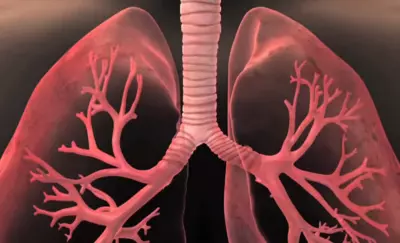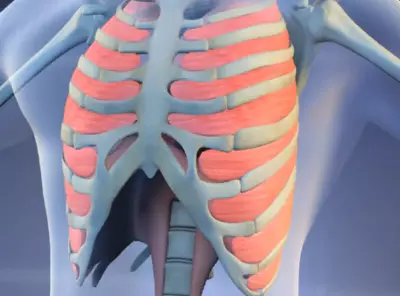Coughing is our body’s defensive reaction to any irritation of the respiratory tract. Coughing can be caused by: foreign body in the airways, inflammation, dust particles, chemicals, vapors, cigarette smoke, bronchospasm and other factors.
Often you can cure a cough yourself at home, but in some cases, the presence of a cough can indicate a pathological condition with which you should immediately consult a doctor.
What kind of cough?
- Coughs can be dry or wet.
It can also be divided into some types:
- Volume: muffled or barking cough.
- When it occurs: In the morning, in the evening or at night.
- Intensity: mild or severe cough.
- Coughing act: short-lived, attacking or persistent cough.
- Duration: subacute (1-3 weeks), acute (3-7 weeks), chronic (more than 7 weeks).
Health changes accompanied by coughing
Coughing Causes
Cough in different diseases is different, as well as the mechanism of its occurrence.
For example, the cough at acute respiratory infections is dry, because during an acute respiratory viral infection viruses multiply and spread in the respiratory tract with great speed, releasing toxins and irritating respiratory receptors, due to which the cough begins. Because not much sputum is secreted, the cough stays dry.
With pneumonia or any other acute viral infection of the upper and lower respiratory tract, there is an acute cough with copious amounts of sputum. The occurrence of sputum, like coughing, is a defense mechanism of our body, i.e. with the help of sputum our body cleans the airways from pathogenic flora of viruses.
Coughing can also occur with cardiovascular diseases, such as arterial hypertension, CHD (coronary heart disease), arrhythmia and others. A common complication of these diseases is chronic heart failure (CHF). In this complication, venous stasis is observed in both circuits of blood circulation, which causes blood stagnation in lungs and increased pressure in lung vessels.
Our body’s defensive response is to decrease the pressure, causing the liquid part of the plasma to penetrate the walls of the alveoli, thereby causing coughing and shortness of breath in a person.
How to recognize the symptoms?
The first thing to do is to pay attention to your breathing: difficult or normal. If a person has difficulty breathing, tries to “catch” air with his mouth, as well as shortness of breath and pale skin and lips, it is necessary to seek immediate medical attention.

Next, it is necessary to measure the temperature. If it is 38 degrees or higher, you need to see a doctor. A high temperature may indicate an infectious or viral respiratory disease.
Pay attention to the color of the sputum. If it is greenish or yellow, it could indicate an inflammatory process or infection. In this case, treatment should be carried out by a specialist. If you find a reddish color (blood) in the sputum, you should immediately consult a doctor. If you have a wet cough, try to collect the sputum on a napkin and examine it. If the sputum is clear, there is no need to worry.
You should also keep a close eye on your general condition. Pay attention to:
- fever;
- dizziness and headaches;
- chest pains;
- Persistent cough, strangling cough;
- waking up at night;
- wheezing;
- weight loss;
- severe weakness, etc.
If the cough does not go away within a few weeks with treatment at home, you should seek help from a specialist.
Cough diagnosis and examinations
So, we should remind you when the cough is a harbinger of serious and dangerous diseases, and when it is worth seeing a doctor:
- The cough persists for three or more weeks;
- the sputum has a yellowish or greenish tint, or has an admixture of blood;
- during the act of coughing, pain under the scapula and radiates into the left arm (indicates the presence of cardiovascular disease);
- pain in the chest area and lack of oxygen.
First of all, when making a diagnosis, the doctor relies on the patient’s complaints, such as: weakness, malaise, fever, there is pain in the throat or it is absent, the presence of a runny nose, cough character, phlegm, etc. And if necessary, he may prescribe additional examinations, for example, if pneumonia is suspected.
Additional examinations include:
- Chest x-ray or computed tomography (CT) scan,
- general and clinical blood tests, and general urinalysis.
- If the patient has sputum, a cytologic examination of the sputum will be ordered.
So, cough is just a symptom of a certain disease, from a cold, to cardiovascular disease and gastrointestinal problems. Basically, the cough appears in conjunction with other symptoms: fever, sore throat, runny nose, etc., identifying which will help determine the exact diagnosis and prescribe the appropriate treatment. There are many diseases that are accompanied by a cough. It is important to understand the importance of seeing a specialist for effective treatment.

About the Author
Reyus Mammadli is the author of this health blog since 2008. With a background in medical and biotechnical devices, he has over 15 years of experience working with medical literature and expert guidelines from WHO, CDC, Mayo Clinic, and others. His goal is to present clear, accurate health information for everyday readers — not as a substitute for medical advice.







